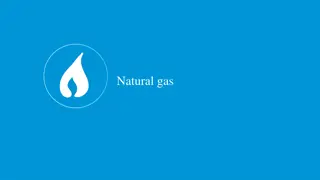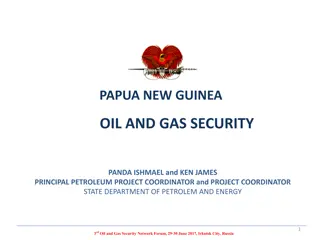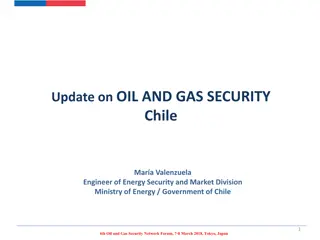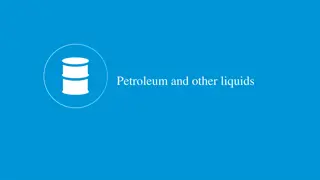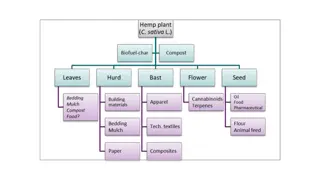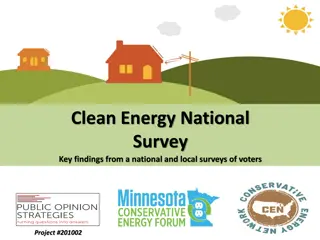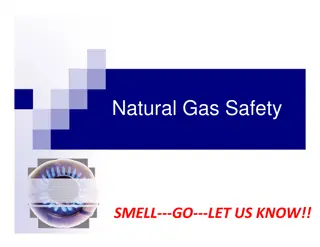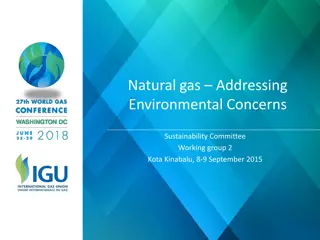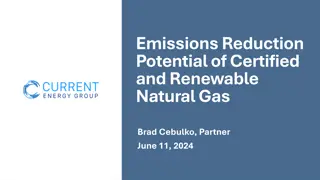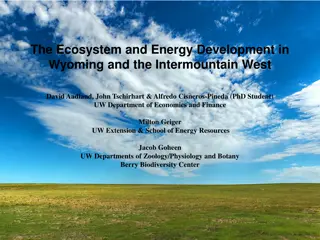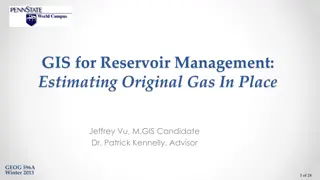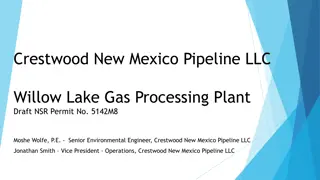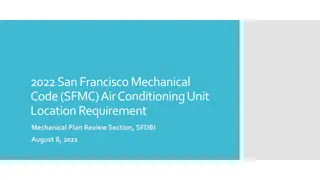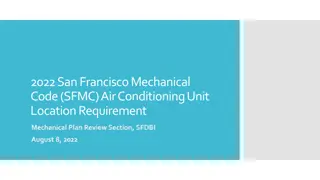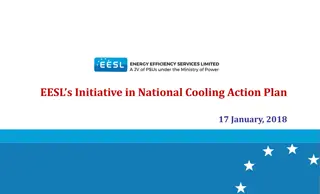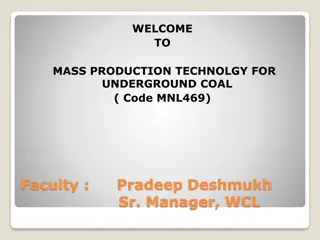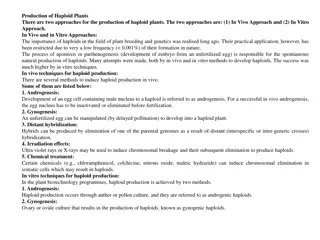Gas Conditioning Techniques in Natural Gas Production
Gas conditioning is essential in natural gas production to remove acid gases like H2S and CO2. Techniques include iron sponge sweetening and alkanolamine sweetening, each with unique advantages and disadvantages for treating industrial gases. Understanding these methods is crucial for maintaining the quality of natural gas for safe transportation and use.
Download Presentation

Please find below an Image/Link to download the presentation.
The content on the website is provided AS IS for your information and personal use only. It may not be sold, licensed, or shared on other websites without obtaining consent from the author. Download presentation by click this link. If you encounter any issues during the download, it is possible that the publisher has removed the file from their server.
E N D
Presentation Transcript
PTRT 2323 Natural Gas Production Chapter 6 Misc. Gas Conditioning Oil and Gas Technology Program Technology Program Oil and Gas
Gas Conditioning H2S and CO2are called acid gases since they form acids in presence of water vapor H2S pipeline specification typically 4 ppm CO2not always required but doesn t burn so pipeline spec typically 2% Pipeline spec requires minimum heating value (BTU/cf) 4ppm = 0.25 grains elemental sulfur includes all forms of sulfur not just H2S Oil and Gas Technology Program
Removing Acid Gases Iron sponge oldest but most limited technique Fe2O3impregnated wood chips or shavings Regenerates partially using hot air Alkanolamine Process Amine Plant Continuous Liquid process Absorption Thermal regeneration Biomass reactor Oil and Gas Technology Program
Iron Sponge Sweetening Used for decades to treat industrial gases Batch process < 120 F to allow for presence of water allows chemistry to proceed Bed can be regenerated Sulfur eventually fouls the bed and it must be replaced Oil and Gas Technology Program
Iron Sponge Sweetening Applicable for: Small gas volumes Low H2S content Selective for H2S No CO2removal Primary disadvantage is change-out of the bed Oil and Gas Technology Program
Alkanolamine Sweetening Alkanolamine Monoethanolamine (MEA) Diethanolamine (DEA) Triethanolamine (TEA) Non-selective remove BOTH H2S and CO2 Weak acid (H2S and CO2) reacts with weak base (MEA, DEA or TEA) to produce a soluble salt Oil and Gas Technology Program
Alkanolamine Sweetening and In regeneration: Oil and Gas Technology Program
Alkanolamine Sweetening DEA Above 125 psia most common lower circulation rates are possible Less energy required for regeneration Below 50 psia DEA will not remove enough H2S MEA most common for low P applications COS (carbonyl sulfide) is a problem in refineries during regeneration but not typically a natural gas field issue Oil and Gas Technology Program
Basic Process Similarity to glycol system obvious Critical to remove separable liquids prior to absorption process Sour gas rises counter-current to the descending amine solution (50:50 mix) Sweet gas exits the top of the contactor Amine regeneration uses a still Oil and Gas Technology Program
Basic Process Gas Sweetening Oil and Gas Technology Program
Basic Process Amine Regeneration Oil and Gas Technology Program
Basic Process Amine Distillation Oil and Gas Technology Program
Amine Regeneration Rich amine flash tank Absorbed gases removed by pressure drop Evolved gases are flared (SO2) Heat exchanger T> 190 F Regeneration still heated by steam rising counter-current to rich amine Heat shifts equilibrium and liberates H2S and CO2 from the amine solution Final cooling of the now lean amine done with cooling tower Oil and Gas Technology Program
Glycol/Amine Process Combines dehydration and sweetening with mixture of treatment chemicals 10-30% MEA 45-85% Glycol 5-25% water Removes water, H2S and CO2 simultaneously Lower equipment costs Oil and Gas Technology Program
Disadvantages Extra losses of MEA caused by higher regeneration temperatures required Reprocessing requires vacuum distillation Complex corrosion problems that can be plant specific ONLY for gas streams that do NOT require low dew points Oil and Gas Technology Program
Sulfinol Process Mixture of solvents (Shell proprietary) Advantages Low circulation rates Smaller plant size Low heat capacity of solvent (easier to heat) Low utility costs Low degradation rates Low corrosion rates Low foaming Effective on other sulfur compounds (COS, CS2 and mercaptans) Low vaporization losses Low fouling of heat exchanger Small expansion during freezing Disadvantages Absorption of heavier hydrocarbons Expense of solvent Proprietary to Shell (royalty payment) Oil and Gas Technology Program
BTU Control As more ethane and propane are removed from the gas stream BTU control becomes important Caution must be taken to avoid inert components (CO2, N2) or BTU content will be too low. Limits amount of ethane and propane that can be removed Mixing low BTU gas with high BTU gas is an option BTU content is measured with a calorimeter Oil and Gas Technology Program







